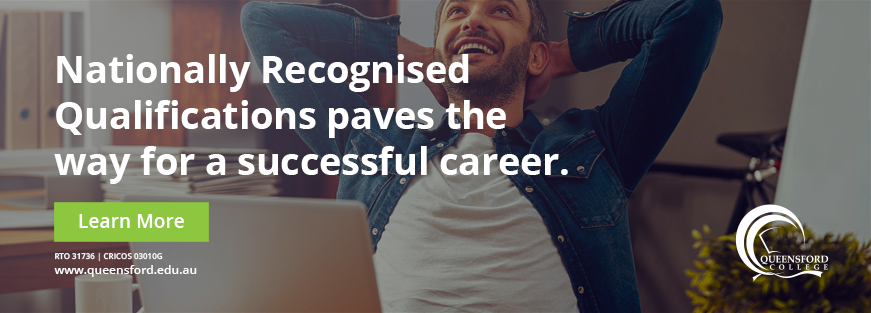The difference between a good or bad resume is being told you got the job.
A resume is a medium for advertising yourself. It is your trademark. A way of self-promotion. It is a glimpse into your professional history, brand, character and way of showcasing your industry-standard skills, knowledge and strengths.
Why spend your valuable time and money on a formal qualification or degree if you don’t invest it back into creating the best possible resume to help you secure your dream job?!
Don’t make the mistake hundreds of other students do. Sit down and spend some time creating a beautifully detailed resume; one that stands out from the rest. After all, you want to floor your potential new boss, not bore them with pages of dull black and white text.
Below is an easy step-by-step guide to help you write a cover letter and resume that will blow your competitors away!
Step 1: Cover letter
Did you know that an employer only takes an average of 8-10 seconds to screen your entire resume and cover letter?
Sometimes it can be even less.
For those who don’t know, a cover letter is a single page A4 document attached to your resume that is typically viewed first. It allows you to market your professional skills, qualities and experience. It should complement your resume perfectly and convince the recruiter you are perfect fit for the position.
To pull off a killer cover letter that grabs your recruiter’s attention, and conveys passion and talent you must:
In the first part of your cover letter start by explaining who you are and what experiences you have e.g.:
“I have recently graduated from Queensford College with a Diploma of Social Media Marketing. I have digital marketing experience across a range of online and broadcast mediums as a social media writer, blogger and producer.
In between studying I worked alongside prominent Brisbane based digital marketing agents including Bess Brennan and Cheryl Sen, where I wrote and edited copy in line with their style guide suitable for publication.”

Show that you’ve gone the extra mile and learn more about the company you might soon join. This will show you’re genuinely passionate about working for them e.g.:
“I’m particularly drawn to dynamic roles at incredible organisations such as Harper Digital Marketing through my passion for global connections, digital strategies and online spaces.
Harper Digital Marketing has shown incredible growth over the past 12-months by landing several of the largest marketing contracts on offer. I understand you’ve earned your reputation as one of the most prestigious digital marketing agencies in Australia through hard work and years of commitment to quality assurance.”
This is the most important section of your cover letter. Scrutinise the job description and determine the key requirements and priorities for this job. This way you can make it clear to your recruiter you are an excellent candidate for the job e.g.
“During my internship at DigiTech Marketing I was able to strengthen my blogging, SEO and auditing skills which saw me launch of the company’s most successful EDM marketing campaigns to date. I believe that this experience will give me the confidence to execute the campaigns you are aiming to launch in this new role.”

It is important you plant a seed of interest in your recruiters mind at the end of your cover letter by requesting an interview or asking to meet. They should be left feeling compelled to pick up the phone and contact you e.g.: “I welcome the opportunity to speak with you about how I could contribute to your already spectacularly creative team. I look forward to hearing for you in the coming days.”
Quick Tips:
Keep your cover letter short and to one A4 page
Never use the same cover letter twice. It is good practice to write a new cover letter for each job you apply for
Address the cover letter to a person NOT a company. Go the extra mile and find out who the hiring manager is
Use emotive, colourful language that sheds light on your personality
Step 2: Resume
A cover letter is like a warm up for your resume. In this increasingly competitive job market, having a professional resume that perfectly reflects your professional brand is paramount. There are many ways to display a resume. The most popular is in chronological order, listing your education first, followed by most recent employment history and then your skills. In 2017, it has become trendy to include a small bio, links to your social media along with an info graphics to display your skill level. Take a look at the 6 things you need to include in your resume:

In this section it is important to only include the details the institute you attended to gain higher education. Do not include your old High school or primary school. Make sure to include the title of your qualification and the name of the educational institute you studied at e.g.: Diploma of Social Media Marketing / Queensford College 2016 – 2017
To show off your experience, include a description of your 2 previous jobs. This should detail the job title, company name, how long you were in the role and your exact responsibilities or duties in said role.
Work out what skills this qualification gave you. What did you learn to do?
Pro tip: pull out your old work book and have a look at the unit topics and outcomes. This will show you exactly what skills you were taught! It is a good idea to highlight these skills in an info graphic and measure how strong you are in each. Recruiters will appreciate your honestly and also see your strengths and weaknesses.
You must include a phone number and an email! How else will the recruiter be able to call and set up an interview?

Whilst it is not essential, it is a good idea to include links to your professional social media, especially if you’ve invested time in establishing an online personal brand e.g. a website. Maintaining a strong personal brand across all your social media profiles like Facebook, Twitter and LinkedIn can help you stand out.
With thousands of employers searching the internet every day, running background checks and investigating candidate’s social media profiles, a memorable online presence that showcases all your strengths and professional experience can be a massive point of difference.
Choose 2-3 people who can testify to your professional skills and industry knowledge. Past employers or mentors are best suited. Avoid listing your parents, siblings and friends.
Quick Tips:
To stand out from other competitors ensure your resume is detailed, concise and no longer than 2 pages
Get creative – search online for plenty of free resume templates! Don’t just stick to Word
Don’t include false information on a resume. Honesty in the best policy!

Become a qualified chef, aged care worker, business manager or accountant or at Queensford College. Take a look at our range of courses here. Or if you prefer to speak to a Course Advisor, call us on 1300 236 364.
